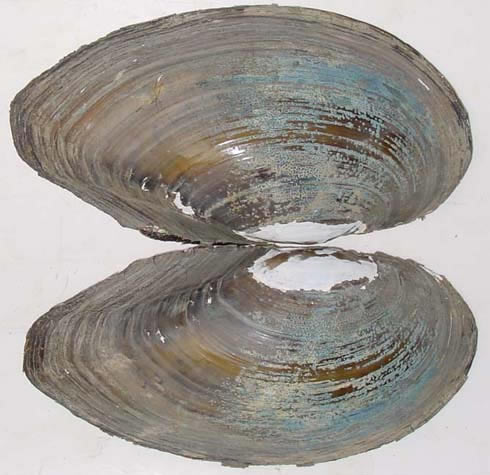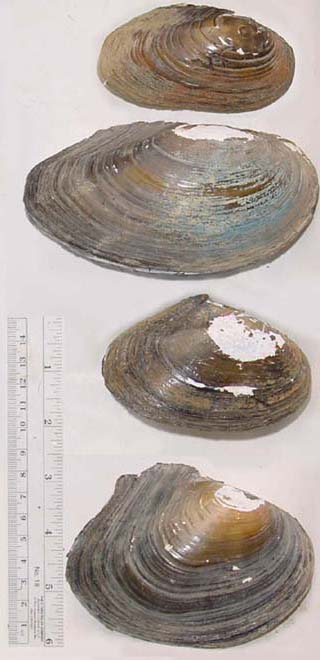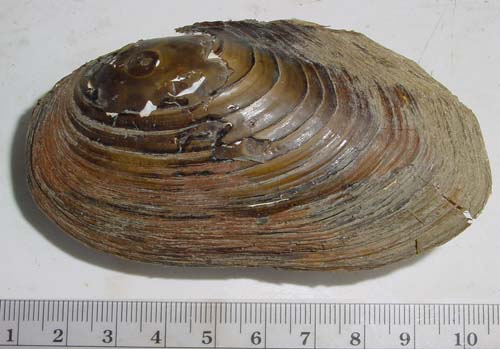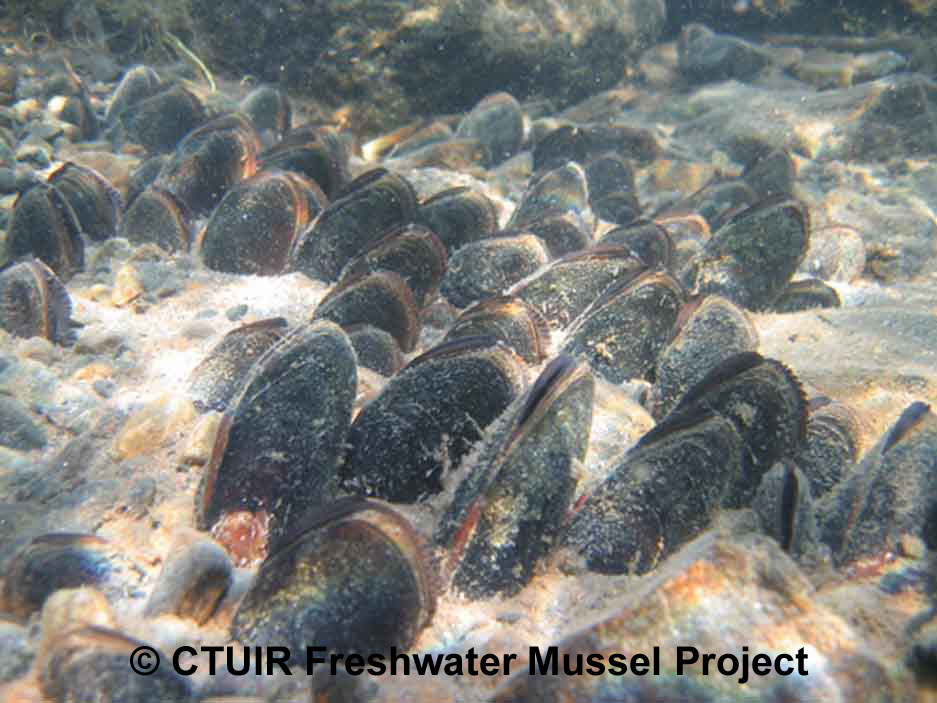
THE XERCES SOCIETY FOR INVERTEBRATE CONSERVATION Aquatic Invertebrates in Pacific Northwest Freshwater Wetlands |
| Identify taxa |
Suborder Unionoida Freshwater mussels are one of the most endangered taxa. They are the longest lived among our largest freshwater macroinvertebrates; one species lives for up to 120 years and reaches up to 7" in length. Freshwater mussels depend on fish hosts for dispersal during the larval stage of their life cycle. . Approximately two thirds of all mussels in North America are imperiled, and about 30 species have gone extinct in the last century. The greatest mussel diversity in the world is in the eastern and Midwestern United States. West of the Rockies, we have only 3 genera and a handful of species, while single counties in Illinois, for example, have 30+ species! Unfortunately, the NW mussels may have similar troubles to their eastern relatives as a result of habitat destruction, habitat fragmentation and loss of fish hosts necessary for their reproduction. The most likely mussels to encounter in Pacific Northwest wetlands are the floaters, in the genus Anodonta. The genus Anodonta is currently considered to have five species in the western US, with one of the five species (the Yukon floater) limited to the far north. These mussels live in soft sand and mud substrates, and are generally tolerant of the lower dissolved oxygen of still water habitats that are common to slow flowing streams, lakes and wetlands. Two other species common to the Pacific Northwest, Margaritifera falcata and Gonidea angulata, will probably not be encountered in wetlands, as they prefer cold, clear streams and are less tolerant of still water habitats. Al Smith, the founder of the Pacific Northwest Native Freshwater Mussel Workgroup, provided the mussel specimens for many of the images in this section of the guide. The Mussel Workgroup has an excellent guide and key to the mussel genera on line (outside link). The freshwater mussels can be easily differentiated from all other macroinvertebrates. They have two, oblong halves to their shell and can be very large. The only other two-shelled macroinvertebrates are the tiny crustaceans Ostracoda and Conchostraca that have little legs coming out from between the shells; the clams, which are relatively small, yellowish, and nearly circular; and the zebra mussel, which has a flat side with light/dark striping and is not currently in the Northwest. If you encounter freshwater mussels while collecting, it is best not to remove them from their habitat. Empty shells can be collected; live mussels should be identified in the field and released. Check here for anatomical diagrams of freshwater mussels. |
| Key to Unionoida | |||
| Anodonta spp. (floaters) - the shell is fairly thin and rounded, doesn't have a prominent ridge, and is usually more brown than black; the interior of the shell is pearly white |
   |
||
Unionoida uncommon in wetlands Margaritifera falcata (western pearlshell)
|
 |
||
|
© 2007 Xerces Society
Contact info@xerces.org
